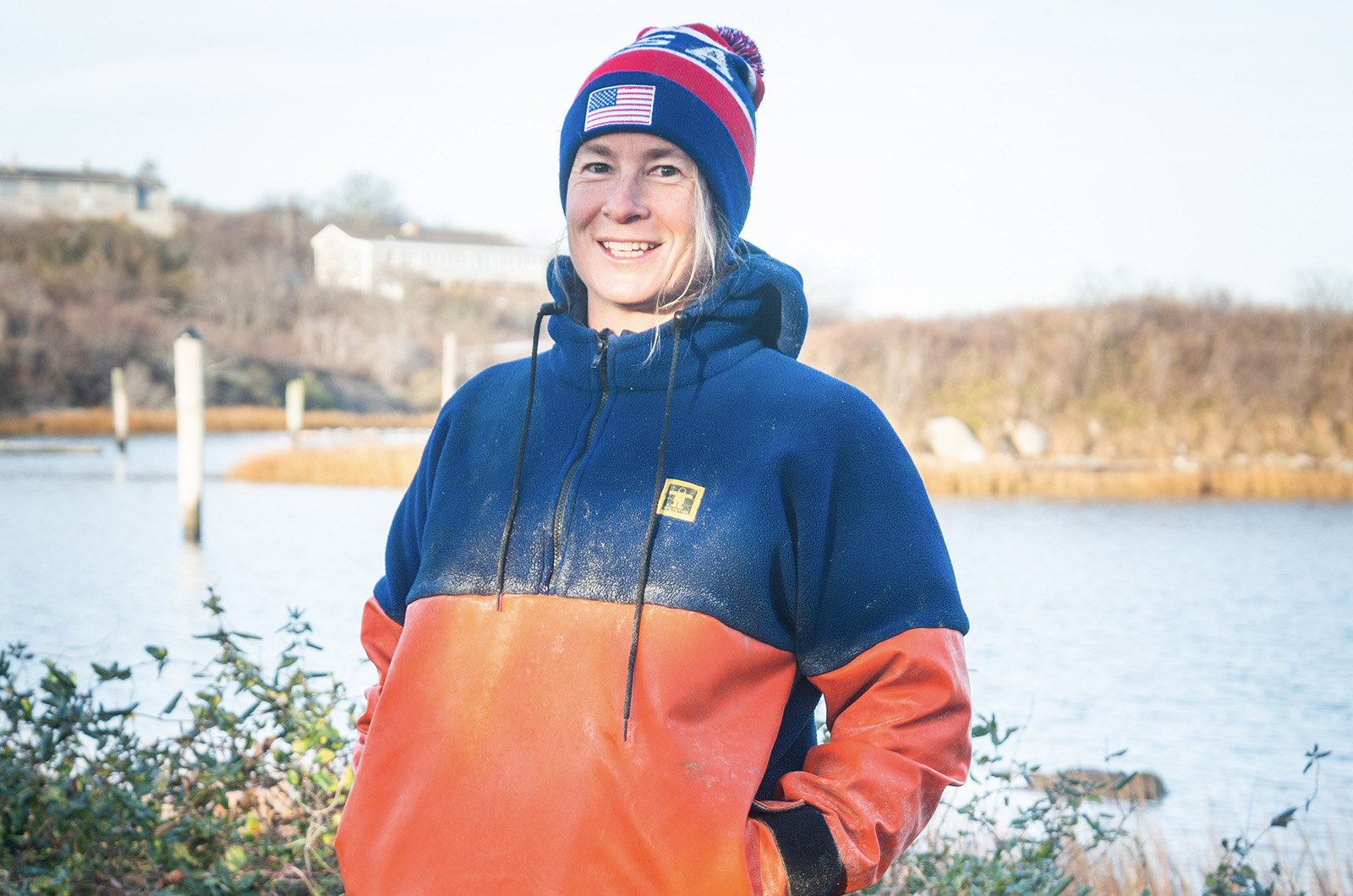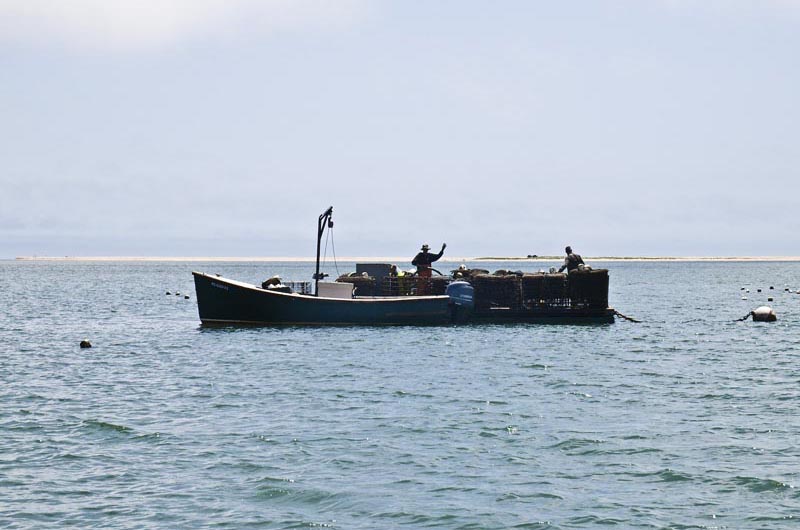Every time Dan Martino visits his Eastville oyster farm, he finds himself overawed by the explosion of life that calls his oyster cages home. There, minnows flit amongst the seaweed with juvenile stripers close in pursuit, and delicate bay scallops flutter between the metal bars.
Recently that awe has turned to inspiration and Mr. Martino was struck with an idea: if bay scallops have an affinity for an aquacultural environment, why not take advantage and farm them directly.
Last week, Dan Martino, along with his brother and business partner Greg who farms in Lagoon Pond, got a state marine fisheries grant to do just that, receiving $27,202 for their Cottage City Oysters operation to undertake a study on farming bay scallops.
It is one of several state grants received by Island sea farmers this month, aimed at bolstering the booming local shellfish industry in a time of climate change.
Still, Mr. Martino said, running a scallop farm in Island waters is a daunting proposition, with bay scallops having a reputation as a particularly fickle species.
“Farming oysters is like farming rocks, but scallops are a lot more difficult,” he said.
Unlike oysters, which calmly lie in their cages, scallops can swim and are prone to cutting each other with their sharp shells when placed in close quarters. Rick Karney, retired director of the Martha’s Vineyard Shellfish Group, said farmers have been trying to cultivate bay scallops for decades, motivated by the bivalve’s high market price.
But there’s been limited success.
“Oysters, you can really beat the hell out of ‘em and they can handle it, but scallops are the most delicate creatures,” he said.
Martha’s Vineyard is one of the few areas where wild bay scallops still support an active fishery. The harvests have been inconsistent recently, though, leading to turmoil in the market.
This winter’s harvest was among the strongest in recent memory, but scallopers struggled to sell their catch after years of uneven catches atrophied the market. Earlier in the season, fishermen could consistently pull in $27 a for their catch, but that price dropped to $15 by the season’s end.
The fact that the wild harvest comes in the winter also means fresh scallops cannot be served during the busy summer season, with restaurants and shops instead stocking up on the frozen catch. A consistent method to farm the species could take advantage of the tourist market.
But the same challenges that make it difficult to find wild scallops also make it tough to farm the species, according to Mr. Karney. They’re susceptible to turbulence when grown in open ocean waters, but growing them in ponds can lead to disease and fouling by barnacles and sea squirts.
Mr. Karney said that the Shellfish Group and local shellfish constables take more of a “ranching” approach to scallop growing, raising them young and then releasing them into the wild for recreational and commercial fishermen.

While most Americans haven’t had much luck farming bay scallops, some Chinese operations have had some success growing them in tubular “lantern nets” which float suspended in the water.
“It’s an extremely labor-intensive process,” Mr. Karney said. But it is a process the Martino brothers will attempt this season, both off Eastville and in the Lagoon, using the grant money to purchase nets and scallop seed supplied by the shellfish group.
The Lagoon might be a good place to try the new strategy, Shellfish Group executive director Emma Green-Beach said, as the pond’s particular conditions make it difficult to succeed with conventional aquacultural strategies.
“The flushing is not very good in the pond, and some of their sites go down 20 feet and the bottom is muddy,” said Ms. Green-Beach of the pond’s adverse conditions. “They kind of have to figure out how to grow stuff off the bottom.”
Meanwhile, in the tiny town of Gosnold on Cuttyhunk Island, Charmaine Gahan of Cuttyhunk Shellfish is also using a $57,000 marine fisheries grant to purchase lantern nets, along with the host of other equipment needed to maintain them and her oyster business.
“We’re one of the few farms that uses lantern nets for oysters, which work well in our location, but it’s expensive to replace that equipment,” she said, adding that their nets are now pushing 30 years old. “At the end of the day there’s more demand for the Cuttyhunk shellfish than I have the supply.”
Mrs. Gahan first worked at Cuttyhunk Shellfish as a teenager, taking over operations of the farm after founder Seth Garfield retired last year. She lives on the Island full-time during the summer and spends three days a week there in the off-season, commuting by car and boat from Concord.
“We’re pretty much the only year-round business here,” she said. “For me to carry this business forward is really important for the Island economy...This grant is the first step in getting me to the direction I want to go.”
Meanwhile, on Dukes County’s more populous Island, Nic Turner of Honeysuckle Oyster Farm in Katama has also received a state grant, $57,785. The money is planned to help Mr. Turner move his shellfish and gear to different farm sites when they experience poor environmental conditions.
The grants were announced late last month when Island farmers were just gearing up for the peak season. Mr. Martino said he and his brother are still in the early goings of the scallop project, with baby scallops the size of a pinky nail. But he remains undeterred about the challenges and hopes it can prop up a whole new market on the Island.
“We’re really pumped about this. We love bay scallops,” he said “We know there’s going to be lots of mortality on the Lagoon site, but it’s 30 feet of water...there’s a lot of potential for vertical farming.”








Comments
Comment policy »